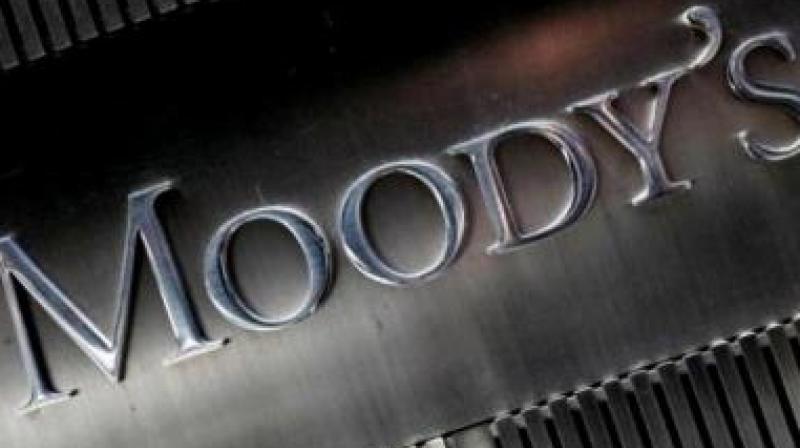Limited room to reduce fiscal deficit to 3 per cent in FY'18: Moody's
The credit rating agency expects the government to renew its commitment to increase capital spending.

New Delhi: The government is likely to achieve its fiscal deficit target of 3.5 per cent of GDP in the current fiscal but higher infrastructure spending will limit the room to reduce it further to 3 per cent in 2017-18, Moody's said today.
The credit rating agency expects the government to renew its commitment to increase capital spending and address the short-term disruptive impact of demonetisation in the Budget to be unveiled on February 1, 2017.
"On the fiscal front, the government will likely remain committed to achieving its fiscal deficit target of 3.5 per cent of GDP for the fiscal year ending March 2017. However, room to reduce the deficit further to the target of 3 per cent of GDP in the following year will be limited, due to the need for increased infrastructure spending and higher government salaries," Moody's Investors Service said in a statement.
It said that in an environment of lacklustre global trade and with economies globally facing the increasing risk of protectionism, India's very large domestic markets provide a relative competitive advantage when compared to smaller and more trade-reliant economies.
The implementation of the pending GST and other measures aimed at enhancing income declarations and tax collection will help widen India's tax base and boost revenues, it said, adding that such a boost will however only materialise over time, with the magnitude uncertain at this point.
With increased infrastructure spending and higher outgo due to pay commission recommendation, Moody's said, the general government deficit will remain sizable and any reduction in India's government debt burden will largely rely on robust nominal GDP growth.
"Moody's expects that India's debt-to-GDP will hover around the current levels (at 68.6 per cent in 2015) before falling gradually, as nominal GDP growth is sustained and revenue-broadening and expenditure efficiency-enhancing measures take effect," it said.
After a temporary dampening effect on consumption and investment in the medium term, demonetisation will likely strengthen India's institutional framework by reducing tax avoidance and corruption and should support efficiency gains through a greater formalisation of economic and financial activity.
"Economic and institutional reforms already introduced and potentially forthcoming, continue to offer a reasonable expectation that India's growth will outperform that of its similarly rated peers over the medium term, and that the country will achieve further improvements in its macroeconomic and institutional profile," Moody's VP and Senior Credit Officer William Foster said.
US-based Moody's Indian affiliate ICRA said that India will remain one of the fastest growing major economies globally in 2017, although GDP growth will moderate in the first half of the year, as the economy adjusts after demonetisation.
The agency expects the growth of gross value added (GVA) at basic prices to remain healthy in 2017, although such growth will ease somewhat to about 6.6 per cent from around 7 per cent in 2016, with a likely pick-up in second half of 2017.
"Even after the currency in circulation is replenished, we expect that India's economic growth will stabilise with a lag, while remaining strong. The adjustment and recovery period could stretch to as much as 2-3 quarters for certain sectors," ICRA Principal Economist Aditi Nayar said.
It said the focus on digital transactions and the introduction of a goods and services tax (GST) will likely reduce the competitiveness of the unorganised sector. ICRA said it therefore anticipates a relatively healthier expansion of the organised sectors in 2017, at the cost of the unorganised sectors.
It pointed out further that the low agricultural growth in H1 2016, as well as healthy reservoir levels on a seasonally adjusted basis, will support the pace of expansion of agricultural output in the first half of 2017.
The loss of incomes in some sectors and deferral of consumption are likely to weigh on capacity utilisation, delaying the capacity expansion plans of the private sector. On the issue of average CPI inflation, ICRA said the rate will soften to 4.5 per cent in 2017 from 4.9 per cent in 2016.
Key factors that will dominate CPI inflation in 2017 include monsoon dynamics, the impact of the GST on prices of various goods and services, commodity price movements, and the INR-USD exchange rate.

